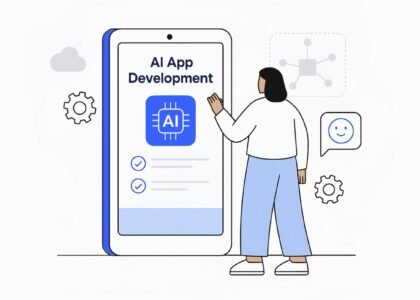Marketing budgets are tighter than they have ever been, yet the demand for compelling content never wavers. As most businesses splurge on costly video production or sophisticated social media campaigns, the remarkably straightforward answer lies before them i.e. page flipping software.
This digital publishing technology converts static PDFs and documents into flipping, magazine-like publications that can be naturally turned through by readers. And yet beyond its aesthetic qualities, page flipping software is one of the most affordable forms of marketing to spend money on today.
What Is Page Flipping Software?
The software application transforms stationary documents such as magazines, catalogs, brochures, and reports into dynamic online publications. These publications emulate the experience of browsing through a tangible book or magazine, with realistic page-turning effects and audio.
The technology accomplishes this by converting your current PDF documents into HTML5-based flipbooks. Pages can be browsed through using mouse clicks, keyboard arrows, or even touch gestures on mobile phones. It feels natural and interactive, much more so than reading through a regular PDF.
Today’s page flipping software supports features such as embedded video, clickable link, search, and social share buttons. Some even provide analytics to monitor reader activity and engagement statistics.
Why Page Flipping Software Trumps Traditional Marketing Materials
Increased User Experience
Static PDFs are clunky and old-fashioned. Zooming, scrolling, and navigation are usually tricky for readers. Page turning software removes these pain points by building a seamless browsing experience that is easily compatible with every device.
Visual appeal is more important than most marketers understand. A good-looking flipbook gets noticed right away and makes readers linger longer with your content. Gone are the days when static content outsells interactive content. Research indicates that two times more engagement is caused by interactive content compared to static content.
Developing mobile-friendly marketing materials used to mean additional design effort and extra resources. Page turning software does it automatically for you, so your content looks great on smartphones and tablets with no extra work from the user.
Being mobile responsive is essential because mobile devices generate more than half of all web traffic. Your flipbooks will be professional in the way they appear and work great whether the viewer sees them on a computer or the phone during their commute.
Professional Appearance at Fraction of the Cost
Custom website development, professional video production, and interactive web applications can cost thousands of dollars. Page flipping software typically costs under $30 per month for most business needs, yet delivers a premium user experience that rivals much more expensive solutions.
Professional appearance establishes credibility and trust with potential buyers. A well-groomed flipbook indicates that your business believes in attention to detail and quality—key drivers of buying decisions.
Cost-Effectiveness: The Numbers That Matter
Low Monthly Investment, High Returns
Most page flipping software platforms have low-cost subscription plans. Starter plans typically range from $15-20 per month, and professional plans with added features hardly reach $50 per month. Compare this to:
- Professional video production: $3,000-10,000 per project
- Custom web development: $5,000-15,000 per project
- Print marketing materials: $500-2,000 per campaign
The arithmetic is persuasive. A one-year subscription to page flipping software is less than the cost of one print marketing campaign.
Savings on Printing Costs
Print-based catalogs and brochures call for large one-time printing investments. A small catalog print run can cost $2,000-5,000, before accounting for shipping and distribution costs.
Digital flipbooks eliminate these expenses altogether. You can make changes instantly, try out various versions, and deliver worldwide without any unit costs. The savings accumulate rapidly, particularly for companies that used to print several marketing items during the year.
Less Design and Development Time
Producing interactive web content has conventionally involved web developers, designers, and project managers. It takes weeks or months from idea to delivery.
Page turning software enables marketing departments to produce high-quality interactive content in hours, not weeks. The majority of platforms have templates and design capabilities that do not involve technical know-how. This reduction in time is directly reflected as cost savings and quicker time-to-market for campaigns.
Sophisticated Features That Amplify Marketing Impact
Analytics and Tracking
Flipping book software today has in-depth analytics that reveal exactly how your audience engages with your content. You can view which pages get the most attention, for how long readers spend reading, and where they normally leave off.
This information maximizes future content and shows ROI to stakeholders. Print materials do not offer this kind of insight.
SEO Benefits
In contrast to PDFs, where search engines have a difficult time indexing them properly, flipbooks are HTML-based and search engine optimized. Your content is made visible through organic search, developing an added traffic source that multiplies over time.
Numerous companies have reported better search rankings following the transition of their PDF materials to flipbooks, especially for long-tail keywords in their industry expertise.
Social Sharing Integration
Built-in social sharing buttons make it easy for readers to share your content across social media platforms. This organic amplification extends your content’s reach without additional advertising spend.
Some platforms even track social shares and provide insights into which content resonates most with your audience across different social channels.
Lead Generation Tools
Higher-end page flipping software has lead capture forms, call-to-action buttons, and contact forms right in the reading experience. This integrated placement turns readers into leads better than contact forms or landing pages on their own.
The contextual placement of these items, just when readers are most engaged with your content—generally results in better conversion rates than standard lead generation processes.
Measuring Success and ROI
Key Metrics to Track
Efficacious flipbook marketing campaigns drive interest metrics that count: time spent reading, pages read, social shares, and conversion actions. These offer more vivid images of content performance than plain download totals.
Monitor lead generation metrics closely. Watch how many readers fill out contact forms, ask for more information, or perform other wanted actions after reading your flipbooks.
Comparing Performance
Compare flipbook performance to your past PDF or print marketing materials. Monitor enhancements in engagement time, sharing behavior, and conversion rates. Most companies observe big gains in all these areas.
Record the cost savings as well. Determine the money saved on printing, shipping, and design work, then compare that to your software subscription costs. The ROI calculation typically heavily favors the digital method.
Conclusion
Page flipping software is one of the few marketing opportunities that exist: an appliance that lowers costs while increasing outcomes. With professional look, mobile compatibility, in-depth analytics, and low costs, it’s a no-brainer for companies wishing to optimize their marketing.
The technology has matured to the point where implementation is straightforward, even for non-technical users. Most platforms such as Enhanc page flipping software offer free trials. Grab it now!






